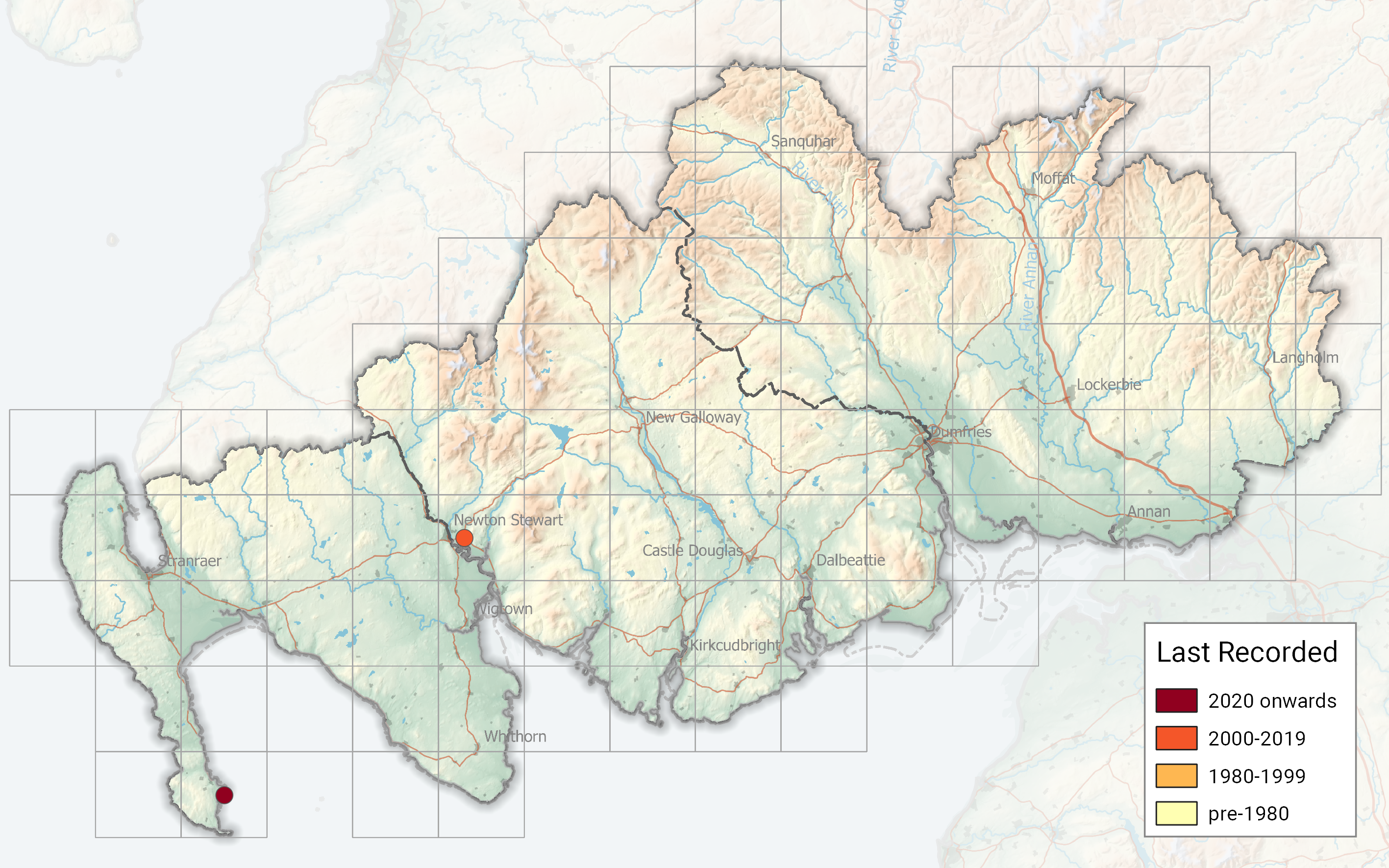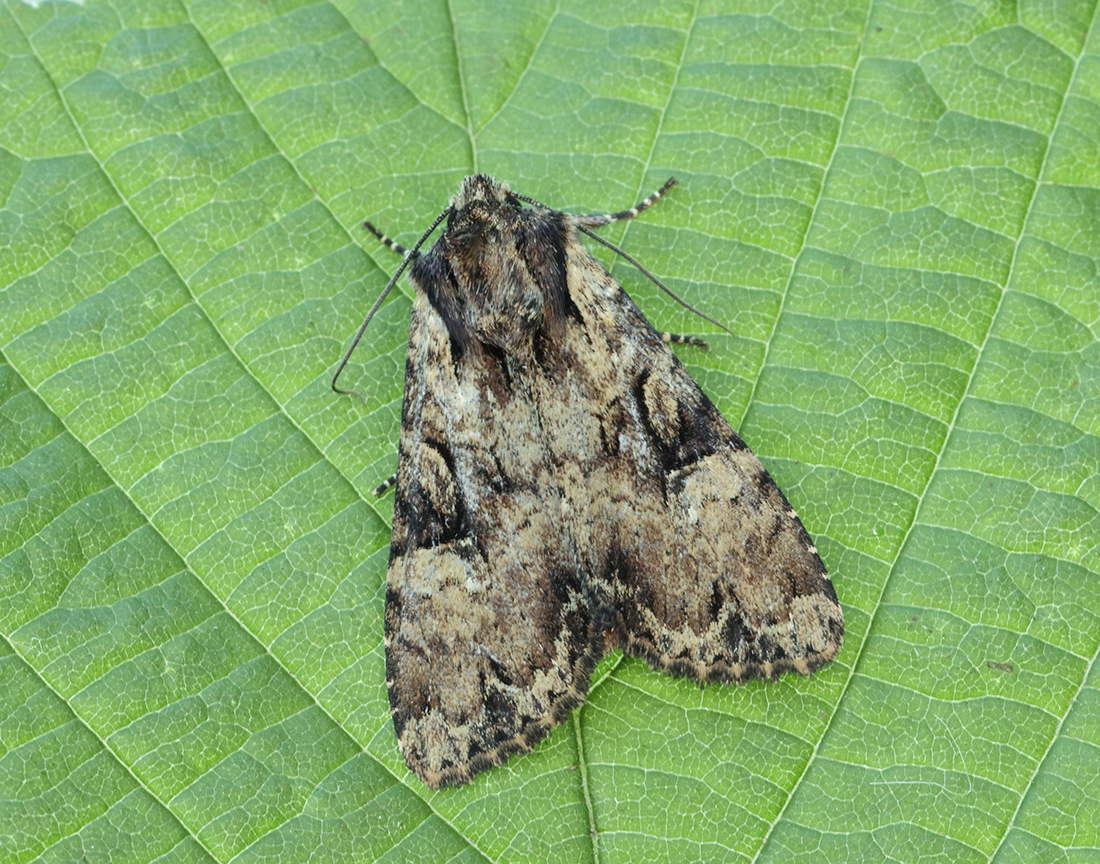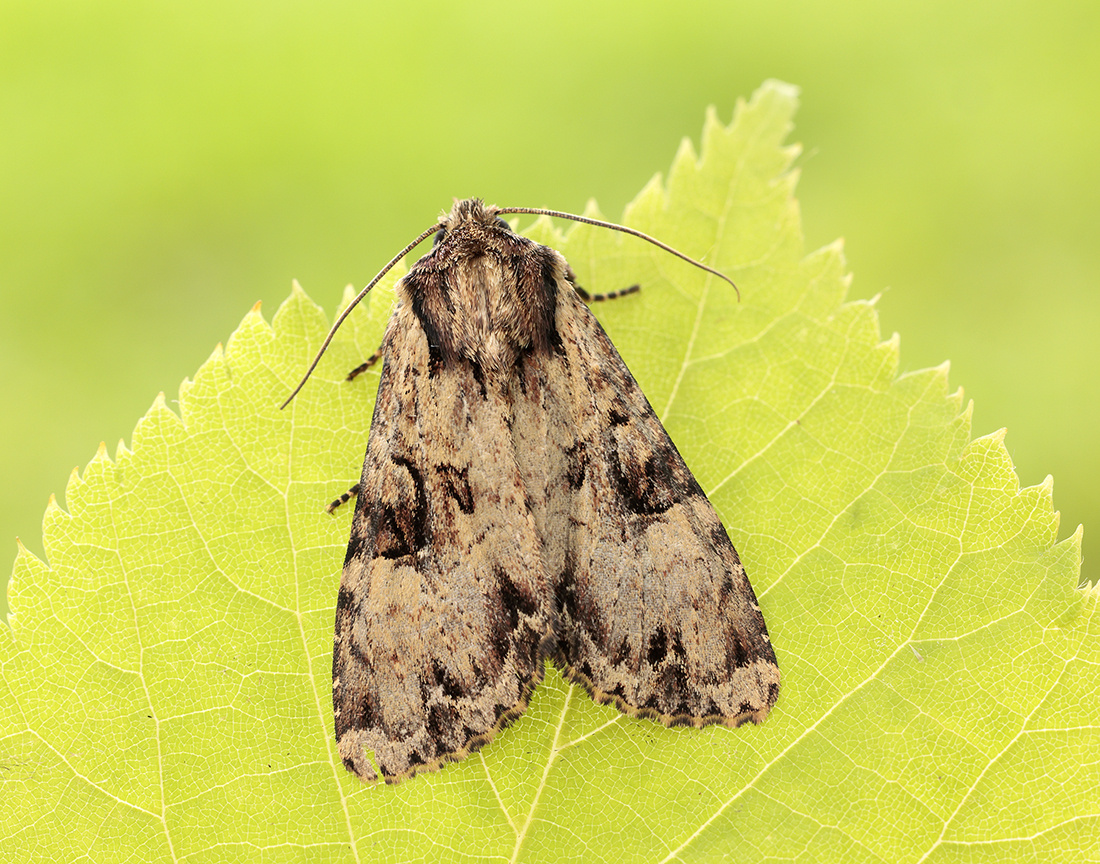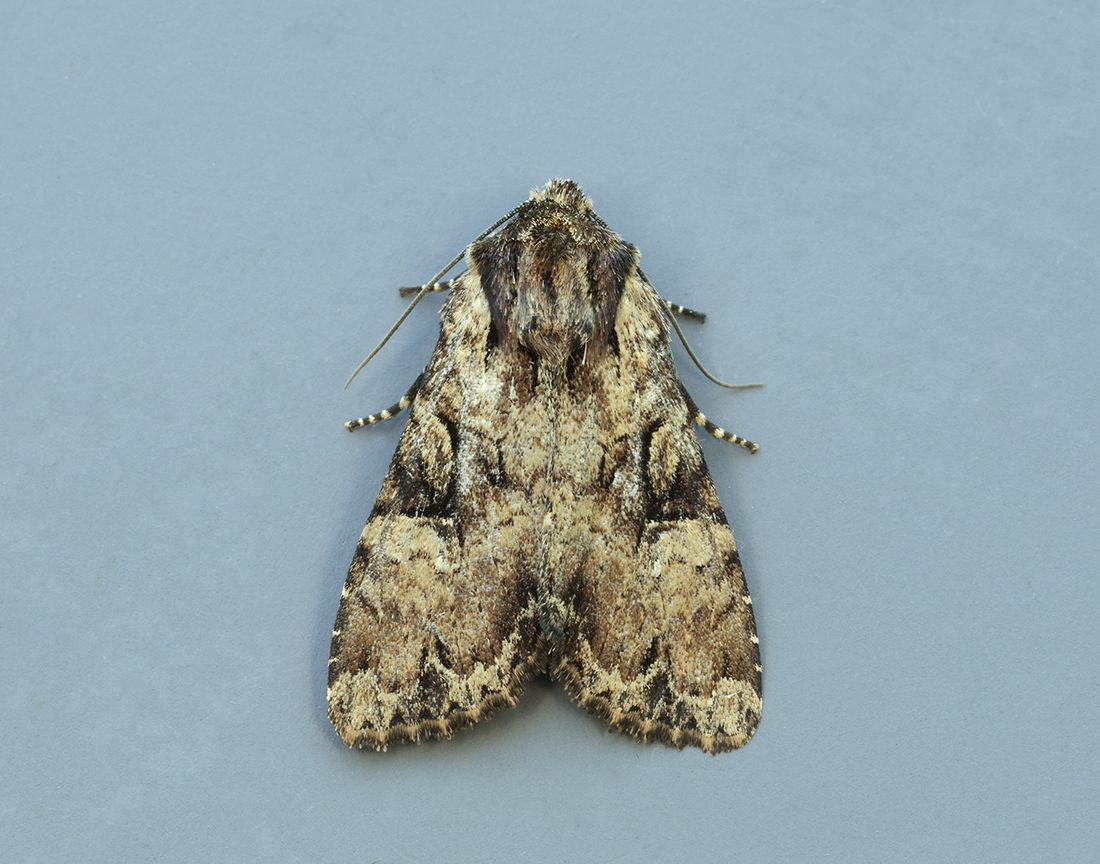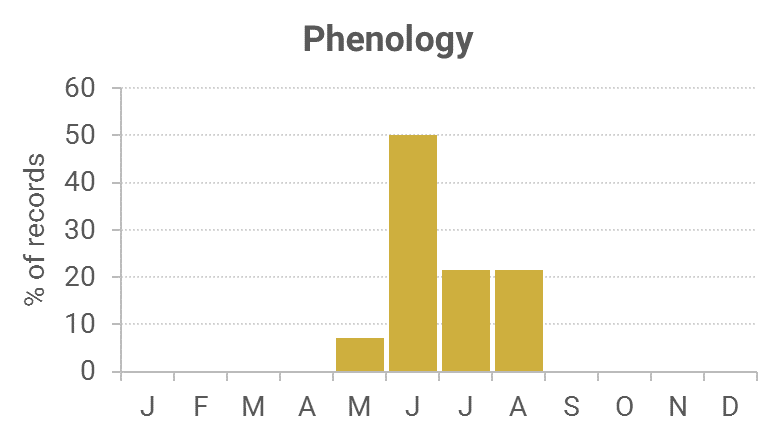Identification
Dark brown or reddish-brown extensive brindling on forewing, with two, short thick dark streaks at the base of the forewing is distinctive.
Recording Method.
Attracted to light, also comes to sugar and flowers.
Life cycle
One generation. Overwinters as a larva during August to early March, feeding by night, hiding by day. Pupation takes place in a cocoon on the surface of the ground.
Larval foodplants
Larvae feed on various grasses.
Habitat
Woodland, scrub, parkland and gardens.
History
Lennon (1863) had found it at Glen Mills during his walks. Gordon (1913) had found it very scarce, but had taken a few at sugar at Corsemalzie (VC74). W. S. Brocklehurst caught it at Park Place, Glenluce in June of 1896 and 1897. Additional to MOGBI.
Next record was in the early 1970s when it was found at the Silver Flowe NNR (VC73). In 1981 there were three records from Waterside Mains at Keir, the only RIS data. Also that year it was trapped at the Ken-Dee Marshes RSPB and on the Hensol Estate (VC73).
It was 1998 before it was found again, this time on the coast at Abbey Burn Foot (VC73). The following year it was trapped at Durisdeer (VC72), and again in 2007.

